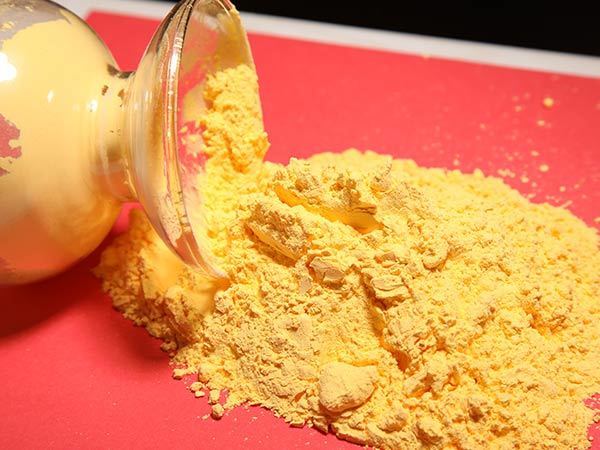 Esperanto
Esperanto
 Shqiptare
Shqiptare
 Euskara
Euskara
 Zulu
Zulu
 Latinus
Latinus
 Cymraeg
Cymraeg
 தமிழ்
தமிழ்
 Slovak
Slovak
 Slovak
Slovak
 Afrikaans
Afrikaans
A Step-by-Step Guide to Using AC Foaming Agents for XPE Effectively
Release time: 2025-03-03
A Step-by-Step Guide to Using AC Foaming Agents for XPE Effectively
In the world of chemical manufacturing, particularly within the realm of surfactants and foaming agents, understanding how to utilize AC foaming agents for cross-linked polyethylene (XPE) effectively can significantly improve production efficiency and product quality. This guide provides a detailed overview of the process, ensuring that you can implement these agents in your operations seamlessly.
Table of Contents
- Understanding AC Foaming Agents
- Benefits of Using AC Foaming Agents in XPE Production
- The Chemical Process of Foaming with AC Agents
- Step-by-Step Guide to Using AC Foaming Agents for XPE
- Optimizing Your Foaming Process
- Common Challenges and How to Overcome Them
- Safety Precautions When Handling AC Foaming Agents
- Frequently Asked Questions
- Conclusion
Understanding AC Foaming Agents
AC foaming agents, or azodicarbonamide-based agents, are widely used in various industries due to their ability to produce a stable and uniform foam when exposed to heat. In the context of XPE, which is known for its lightweight and insulating properties, these agents contribute significantly to enhancing product performance. They work by releasing gas during the thermal decomposition process, creating a network of bubbles that form the desired foamed structure.
How AC Foaming Agents Work
The mechanism of AC foaming agents involves a thermal decomposition reaction. When heated above a specific temperature, these agents break down, releasing nitrogen gas that leads to foam formation. The quality of the foam produced is influenced by several factors, including the concentration of the foaming agent, the temperature, and the processing conditions.
Benefits of Using AC Foaming Agents in XPE Production
Utilizing AC foaming agents in XPE production offers multiple advantages. Here are some key benefits:
- Enhanced Lightweight Properties: The incorporation of AC agents allows for a reduction in density, making XPE products lighter while maintaining structural integrity.
- Improved Insulation: The foam structure traps air, providing excellent thermal insulation properties ideal for various applications.
- Cost-Effective: AC foaming agents are relatively inexpensive, making them a cost-efficient choice for manufacturers looking to enhance product quality without significant investment.
- Versatility: These agents can be used in various applications, including packaging, automotive parts, and construction materials.
The Chemical Process of Foaming with AC Agents
The foaming process with AC agents involves several steps, beginning from the selection of the right foaming agent concentration to the thermal processing conditions. Understanding the chemical interactions at play is crucial for optimizing the foaming process.
The Role of Temperature and Time
Temperature is a critical factor in the foaming process. The decomposition temperature of AC agents typically ranges between 190°C to 230°C. Maintaining the right temperature and processing time is essential to ensure complete gas release and achieve the desired foam structure. Insufficient heating can lead to inadequate foaming, while excessive temperatures can result in degradation of the polymer matrix.
Step-by-Step Guide to Using AC Foaming Agents for XPE
Implementing AC foaming agents effectively in XPE production can be broken down into the following steps:
Step 1: Selection of Foaming Agent Concentration
Determine the appropriate concentration of AC foaming agent based on the desired properties of the final product. Typically, concentrations range from 1% to 5% by weight, depending on the specific requirements.
Step 2: Proper Mixing
Ensure a thorough mixing of the foaming agent with the base resin. This can be achieved using high-shear mixers or twin-screw extruders, which promote uniform dispersion of the agent within the polymer matrix.
Step 3: Setting Processing Parameters
Establish optimal processing parameters, including temperature, pressure, and cooling rates. Conduct trials to identify the sweet spot for processing conditions that yield the best foaming results.
Step 4: Molding and Cooling
Upon achieving the desired foam density, transfer the mixture into molds. The cooling phase is critical in solidifying the foam structure, and it should be carefully controlled to avoid defects.
Step 5: Quality Control
Perform quality control checks to ensure that the final product meets specified standards. This includes testing for density, thermal insulation properties, and structural integrity.
Optimizing Your Foaming Process
To enhance the efficiency and output of your XPE production using AC foaming agents, consider the following optimization techniques:
Conduct Regular Process Audits
Regularly assess your foaming processes to identify any inefficiencies or areas for improvement. This can lead to adjustments in temperature settings, mixing techniques, or even the formulation of the foaming agent used.
Invest in Advanced Equipment
Utilizing state-of-the-art mixing and processing equipment can drastically improve the uniformity of dispersion and the overall quality of the foamed products.
Stay Updated on Industry Trends
Keeping abreast of the latest developments in foaming technology can provide insights into new formulations and techniques that may enhance your production processes.
Common Challenges and How to Overcome Them
While using AC foaming agents, you may encounter several challenges. Here’s how to tackle them:
Inconsistent Foam Quality
Inconsistent foam quality may arise from improper mixing or incorrect temperature settings. To mitigate this, ensure thorough mixing and consistently monitor temperature throughout the production process.
Excessive Foam Expansion
Excessive expansion can lead to product defects. Careful calibration of the foaming agent concentration and control of thermal parameters is essential to prevent this issue.
Environmental Concerns
The use of AC agents may raise environmental concerns regarding emissions. Consider investing in emissions control technologies to minimize any environmental impact and comply with regulations.
Safety Precautions When Handling AC Foaming Agents
Ensuring safety during the handling of AC foaming agents is paramount. Here are essential precautions to follow:
Use Personal Protective Equipment (PPE)
Always wear appropriate PPE, including gloves, goggles, and masks, to protect against exposure to chemicals.
Maintain Proper Ventilation
Ensure that work areas are well-ventilated to prevent the accumulation of potentially harmful fumes during the handling and processing of foaming agents.
Implement Emergency Procedures
Establish and train staff on emergency procedures in case of accidental exposure or spills to ensure a quick and effective response.
Frequently Asked Questions
1. What is the ideal concentration of AC foaming agents for XPE?
The ideal concentration typically ranges from 1% to 5% by weight, depending on the specific product requirements.
2. How does temperature affect the foaming process?
Temperature significantly impacts the decomposition of AC agents, with optimal ranges usually between 190°C to 230°C for effective foaming.
3. What safety measures should be taken when using AC foaming agents?
Personal protective equipment (PPE) should always be worn, and work areas should be well-ventilated. Proper training on emergency procedures is also necessary.
4. Can AC foaming agents be used in other applications besides XPE?
Yes, AC foaming agents are versatile and can be used in various applications, including packaging, automotive parts, and construction materials.
5. What are the common challenges faced when using AC foaming agents?
Common challenges include inconsistent foam quality, excessive foam expansion, and environmental concerns related to emissions.
Conclusion
Effectively utilizing AC foaming agents in XPE production is an art that combines science with practical application. By following the outlined steps and principles in this guide, manufacturers can optimize their processes, overcome common challenges, and enhance the quality of their products. As the demand for lightweight and insulating materials continues to grow, embracing the capabilities of AC foaming agents will undoubtedly place manufacturers at the forefront of the competitive landscape. We encourage you to implement these strategies to unlock the full potential of your XPE production capabilities.
 sales@feihengchem.com
sales@feihengchem.com
 +8615665855919
+8615665855919 中文
中文 English
English España
España











